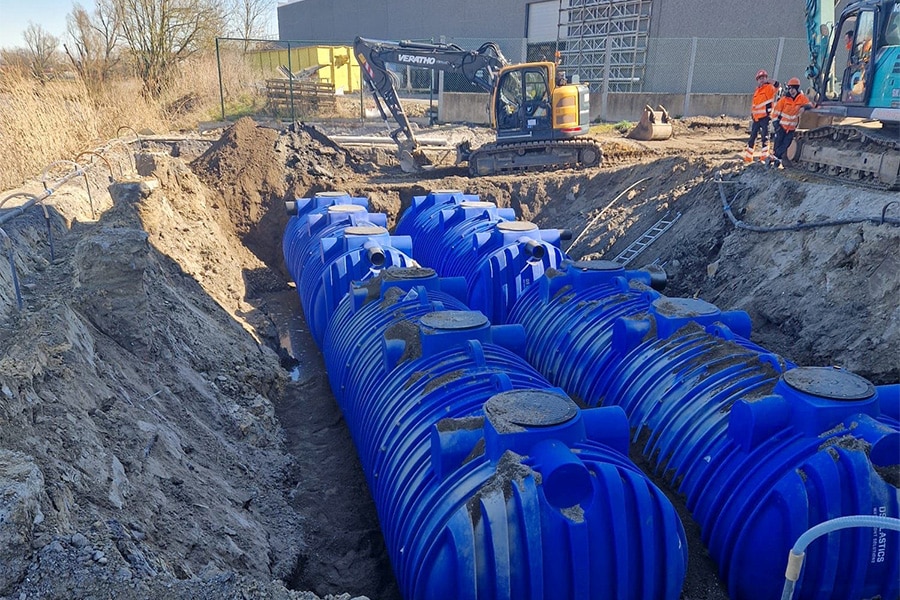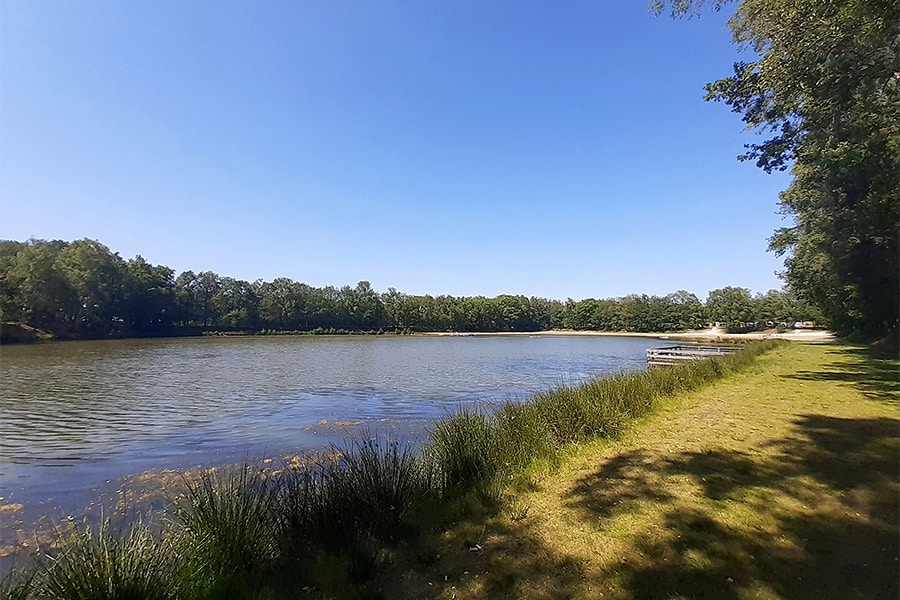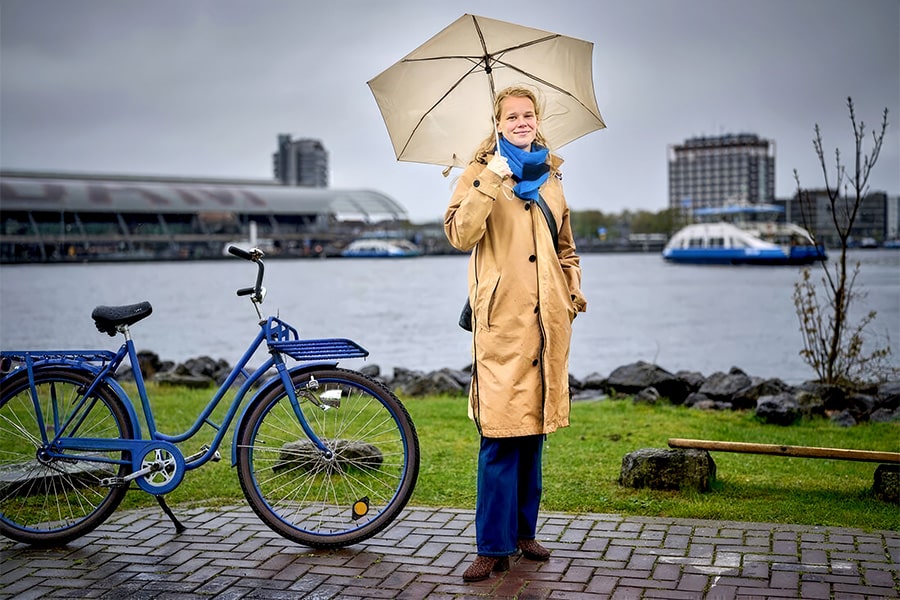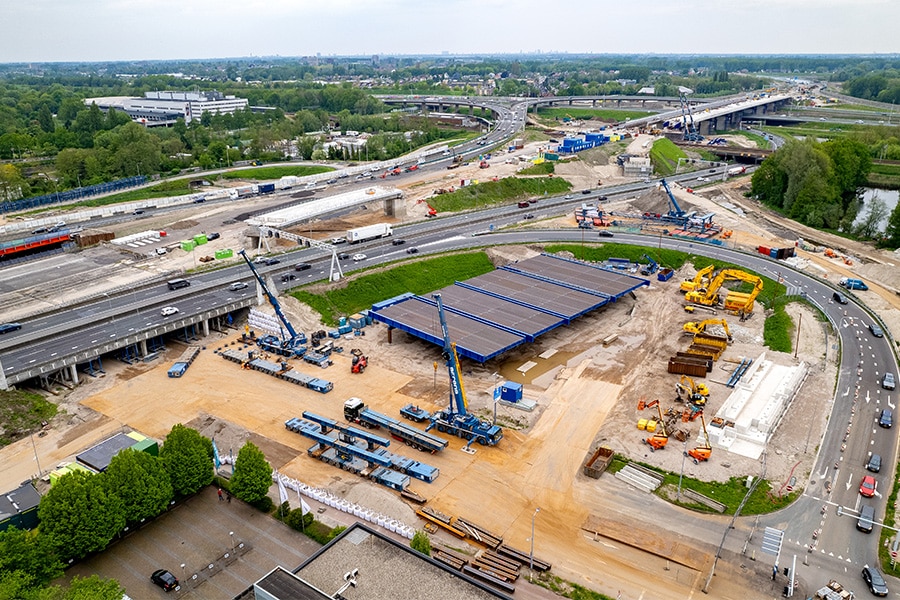
Distinguished in heavy lifting and special transport
Sarens has a framework contract with construction consortium De Groene Boog for all regular crane and transport services at the A16 Rotterdam motorway. Some structures require extra heavy lifting or special transport. The originally Belgian family business knows how to deal with that too. This was recently confirmed once again during the long Ascension weekend. Sarens was responsible for driving in the concrete trough girder of the viaduct that forms part of the new slip road from the Hoofdweg (KW52B) and then brought the auxiliary bridge of the A16 northbound into position (TK59).
From the framework contract with De Groene Boog, we have been involved in the A16 Rotterdam from the beginning of the project and have also been at the construction site in that capacity, begins Willem Ditmer, project manager at Sarens. "Specifically for the long Ascension weekend, we were asked to help think about the transport of KW52B, and from there the entry of the auxiliary bridge TK59 also came up. Since the A16 was closed that weekend anyway, De Groene Boog took the opportunity to combine these activities. As an internationally operating crane company, we are always able to mobilize the necessary equipment."

Curved trough beam
KW52B was built on temporary abutments at a pre-construction site next to the A16. "This is a curved concrete trough girder weighing over 1,500 tons," says Willem. "Our task was to first maneuver the object toward the A16 and then transport the colossus about 500 meters northward to position it on the two final abutments." To this end, Sarens prepared two sets of SPMTs (Self-Propelled Modular Trailers) and equipped them with hydraulic cylinders. "First, the SPMTs were positioned under the structure, then the girder was pushed loose from the temporary abutments and we slowly drove to the A16. Once on the highway, a course was set northward." To prevent the structure from sinking, the ground at the pre-construction location and the shoulder was excavated in advance and made load-bearing. Steel driving plates were used on the highway to protect the asphalt. "The asphalt is 'an sich' quite strong, but not suitable for maneuvering with our SPMTs. That causes pitting."
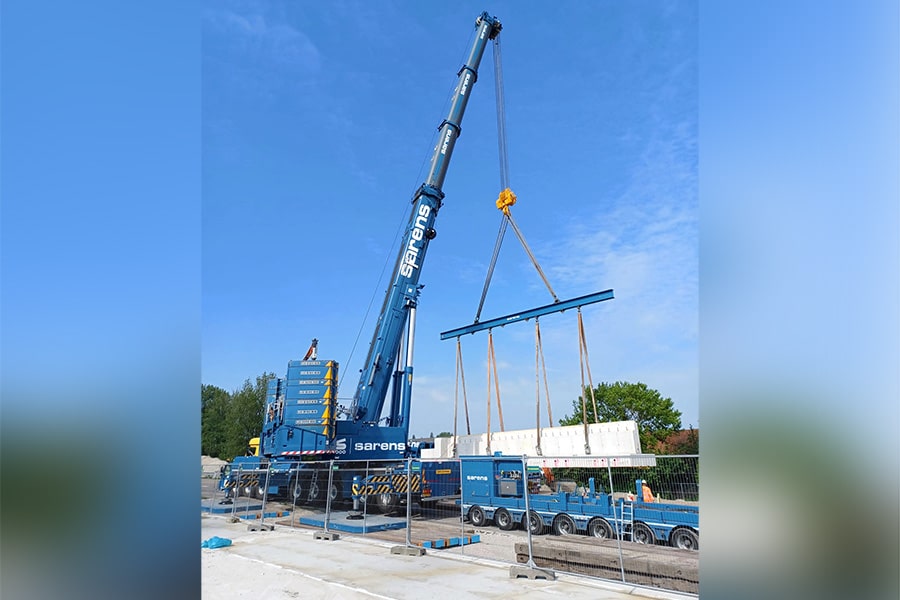
SPMT
For this operation, Sarens deployed two identical sets of 52 axle lines. "There are four wheels on one axle line, so that means 208 wheels per side," Willem calculates. SPMTs are modular trailers with standard 4, 5 or 6 axle lines. They are designed to fit into a shipping container and thus can be sent all over the world. And that is exactly what Sarens does. They are eagerly used. The company owns more than 3,000 axle lines, but has had to rely on third-party module trailers to move KW52B in. "The modules can theoretically be coupled indefinitely as needed. Propulsion comes from a separate power pack that generates energy to drive, steer and lift. All modules are not only mechanically but also electrically and data-coupled. The latter is necessary to transfer the various drivers. Those steering programs are configurable in such a way that we can basically perform any maneuver that is needed. That is the great advantage of this type of trailer."
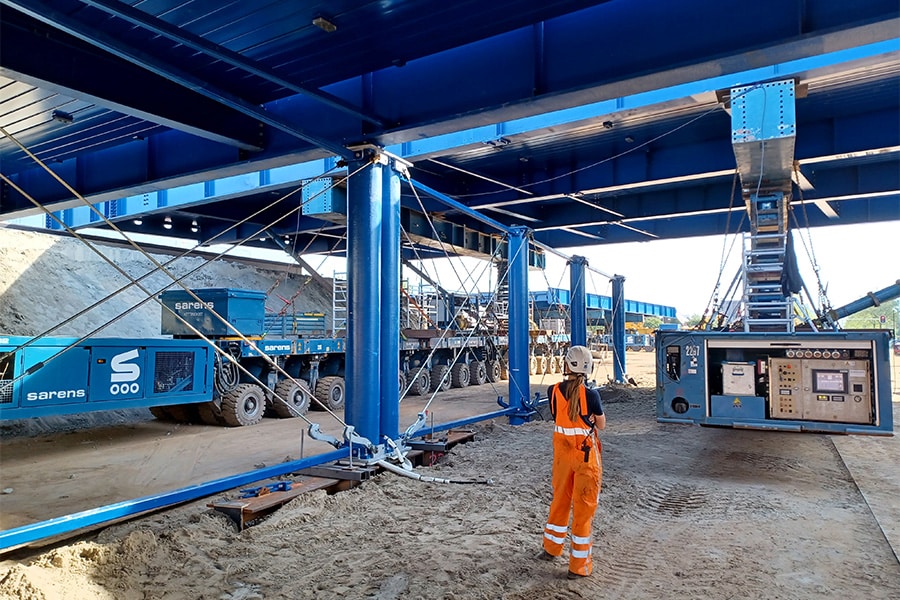
Braces
Back to the A16 Rotterdam. On the highway, the concrete trough girder was steered to its final position at a speed of 3 km/h. "Once in position, we lowered the girder onto the abutments. The whole exercise from picking it up at the pre-construction site to lowering it into its final position took 3 hours and 15 minutes," says Willem. "The two sets of SPMTs were interconnected with braces. A deliberate choice. One trailer combination stood straight under the artwork, the other with an angular offset because of the curved girder. We can indicate that difference in the computer control of the SPMTs, but if you are slightly off, it can have consequences. With the brace system in between, we know for sure that the trailers stay the same. And it proved to be so. On the Friday after Ascension Day at 1:30 p.m., our job was done. At least as far as artwork KW52B was concerned, because there was another artwork waiting for us."
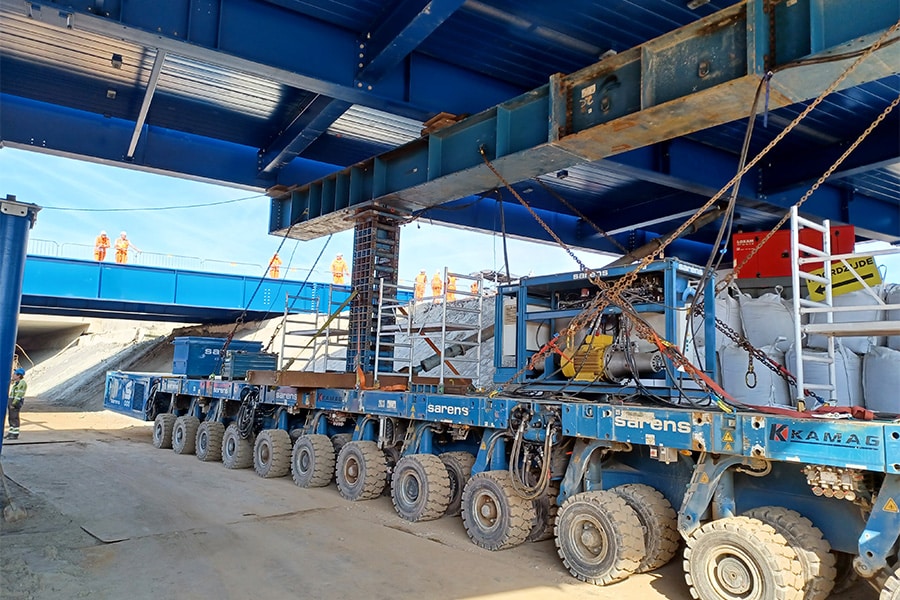
Risk management
A day later it was indeed TK59's turn. "In consultation with De Groene Boog, we decided to use other sets of SPMTs for this operation," Willem continued. "First, because of the scheduling risk. Should the transport of KW52B be delayed for any reason, you don't want it to affect the entry of auxiliary bridge TK59. In addition, the space we had on the main road for the entry of TK59 was very limited. Then you don't want to have to do any additional transport operations." Auxiliary bridge TK59 consists of four parts (with a maximum weight of 285 tons per part) and was prebuilt by Civil Engineering deBoer on a site in the armpit of exit Prins Alexander on the A16. Willem: "The foundation here was not optimal either. It was therefore chosen to slide the elements above our SPMTs, so that De Groene Boog only had to improve the ground over a limited area."

Iron Towers
In the week leading up to the Ascension weekend, Sarens first installed the prefabricated abutments (with a maximum weight of 100 tons) of TK59 using two 700- and 650-ton mobile cranes. "During that week, all preparations were also made to make the drive-in as efficient as possible. For example, two bridge sections were ready for departure on the SPMTs and two on the sliding structure. In fact, we first had to jack up the bridge decks and jack them back into position, because the deck had to be driven in over the new abutments. For this, we equipped the SPMTs with jacking towers," explains Willem. "This operation also went perfectly. Even though we started a little later because of problems with rising groundwater, we made up some time during the drive-in. That's the quality we stand for. Achieving the intended result together with the client. Thanks to our extensive range of tools and a gigantic fleet of cranes worldwide."
The SPMTs used in driving in TK59 went on transport to Frankfurt am Main for the next job immediately after the project. "We are currently driving in a bridge every weekend," says Willem. But also on the A16 Rotterdam, Sarens will provide the necessary crane services from the framework contract in the coming period.
